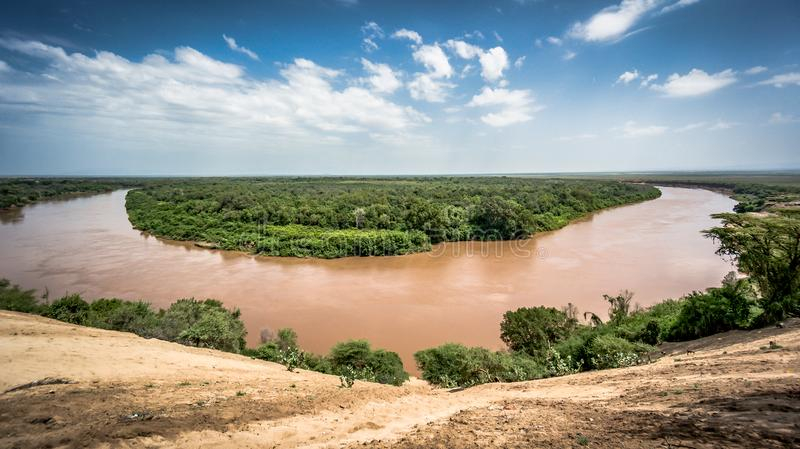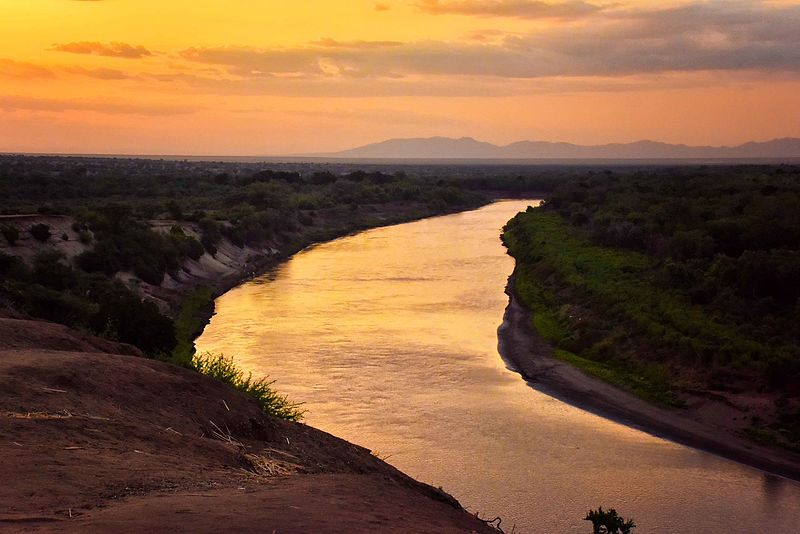Omo River

The Omo River (also known as the Omo-Bottego) in southern Ethiopia is the largest river in Ethiopia outside of the Nile Basin. Its entire course is within the borders of Ethiopia, and it empties into Lake Turkana on the Kenyan border. The river is the main stream of the Turkana Basin, an endorheic drainage basin.
The river basin is well-known for its abundance of early hominid fossils and archeological discoveries, such as early stone tools, which led to its inclusion on the UNESCO World Heritage List in 1980.
The Omo River is formed by the confluence of the Gibe River, the Omo River's largest total tributary, and the Wabe River, the Omo River's largest left-bank tributary, at 8°19′N 37°28′E. Given their sizes, lengths, and courses, one might mistake the Omo and Gibe rivers for the same river with different names. As a result, the entire river basin is sometimes referred to as the Omo-Gibe River Basin. This river basin encompasses a portion of the western Oromia Region as well as the heart of the Southern Nations, Nationalities, and People's Region.
Its general direction is south, with a major bend to the west at about 7° N 37° 30' E to about 36° E, where it turns south until 5° 30' N, where it makes a large S- bend and resumes its southerly course to Lake Turkana. The Omo-Bottego River is 760 kilometers long, according to materials published by the Ethiopian Central Statistical Agency.
The Omo-Bottego has a total fall of about 700 m in its course, from the confluence of the Gibe and Wabe rivers at 1060 m to 360 m at lake level, and is thus a rapid stream in its upper reaches, broken by the Kokobi and other falls, and navigable only for a short distance above where it empties into Lake Turkana, one of the Gregory Rift's lakes. According to the Spectrum Guide to Ethiopia, it is a popular white-water rafting destination in September and October, when the river is still high from the rainy season. The Gibe River is its most important tributary; smaller tributaries include the Wabi, Denchya, Gojeb, Mui, and Usno rivers.
The Omo-Bottego River defined the eastern borders of the Janjero and Garo kingdoms. The Omo also runs through the Mago and Omo National Parks, which are well-known for their wildlife. Many animals, including hippopotamuses, crocodiles, and puff adders, live near and on the river.
Length: 760 km (472 mi)











